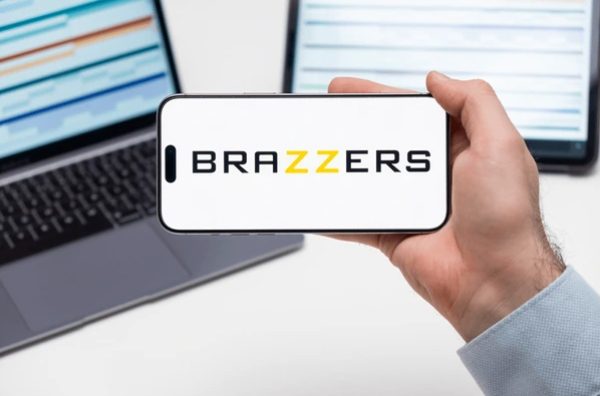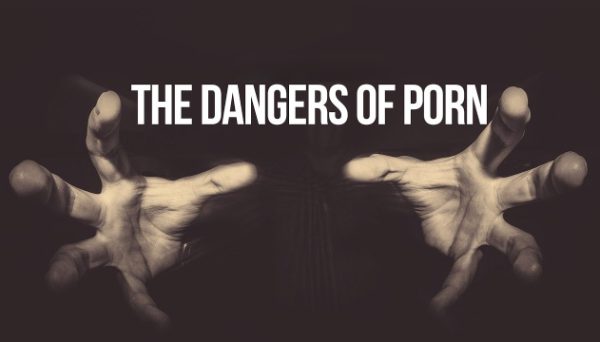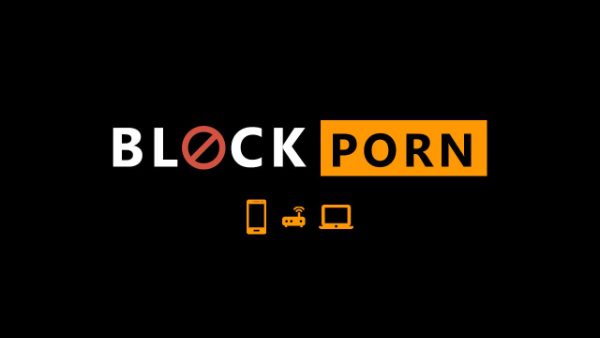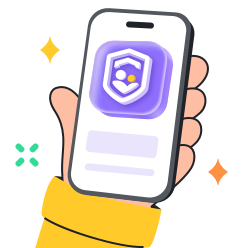Brazzers is a popular website in the adult entertainment industry, which offers massive, explicit content. The parental concerns are whether children can easily access it or even initiate it out of curiosity. This article strives to provide parents with concrete information about Brazzers and other free sites, how children may access them, and the associated risks. It further provides the best approaches that parents should employ in filtering and blocking adult content to ensure kids’ online safety.
What is Brazzers? Key facts for parents
Brazzers is a Montreal-based adult entertainment site developed to provide high-quality entertainment. It is nowadays a traditional brand in the international pornography market. MG Premium Ltd. owns Brazzers and runs a variety of adult sites with a huge catalogue of content. This well-categorized site features thousands of movies and exclusive content that cater to the entire spectrum of adult preferences. It is an advanced production concept that has enabled Brazzers to establish itself as a kind of mainstream adult site.



Age requirement and verification
To access the official Brazzers site, users must confirm that they are at least 18 years old. Some countries require visitors to be at least 21 years of age. Brazzers requires 18+ verification via a checkbox that minors can bypass easily.
Countries like the United Kingdom and Germany have been attempting to impose strict rules, requiring individuals to upload their ID or provide biometrics. Nevertheless, these safety measures are not the same everywhere. The U.S. laws require more secure age verification, but there is patchy enforcement in practice.
Guard kids from explicit content, and secure their online safety with wise parenting.
Is Brazzers free to watch?
Brazzers is organized into a commercial site and gets revenues from paying subscribers who view quality and exclusive content. Full-length videos and premium content are not available for free.
Standard subscription model
The main Brazzers site requires a paid subscription:
- Subscription works like most streaming services: monthly/annual plans.
- By joining, you get unlimited free Brazzers videos, access to the full catalogue, and other benefits (e.g., customer support and bonuses).
- The payment process is provided through secure channels so that the user’s privacy is maintained.
In some cases, Brazzers provides free trials. This is meant to lure new consumers and turn them into paying subscribers. Visitors must submit payment details, and sometimes personal IDs, to access trial benefits.
Users can watch short promotional previews on Brazzers’ social media and sometimes its official site. All these clamps generally take less than five minutes. They are simple teasers and not intended to replace the actual content.
Is Brazzers a safe and legal site?
Brazzers is a legitimate business within the acceptable limits of the adult business. It complies with industry regulations:
- Brazzers verifies performer age with contracts and consent forms.
- The production and distribution of all content are based on transparent contracts.
- Payment gateways are safe and secure for consumer security.
Accessing Brazzers in a restricted country is not an arduous matter. The company is well-regulated and is digitally secure.
There are some serious caveats, however:
- Some nations have outlawed everything pornographic, thus banning even legal websites such as Brazzers. Watching Brazzers in these states can cause a monetary penalty or lawsuits.
- Authorities can prosecute parents in some jurisdictions if they allow children to create accounts, whether deliberate or not.
Brazzers alternatives parents should be aware of
It is not enough to block a single website. Thousands of unofficial free Brazzers porn sites have names or branding based on Brazzers to attract traffic. Some are making their presence known, and others are lurking behind VPN, hidden links, or other search engines.
How do alternatives injure kids?
Some sites skip age verification and provide minimal content controls. This gives room to:
- Third-party websites often reproduce stolen videos, usually unfiltered or edited. May contain non-professional pornography that is shot without permission.
- Media that contravenes laws of violence, bestiality, or child exploitation.
Children may encounter graphic, extreme, and violent content on such sites compared to regulated commercial ones.
The worst inappropriate apps and websites for kids:
Parents should block the following to protect their children:
- Porn aggregators: These areas consist of names that contain the terms porn, tube, xxx, and free. Domains to monitor and block: Pornhub, RedTube, YouPorn, XVideos, XHamster, Spankbang.
- Torrent or file-sharing sites: They tend to disguise themselves as “family videos” or some other harmless files. Such sites/apps might announce free porn videos or free Brazzers premium content access without registration or a verified adult login.
- Anonymous chat rooms: People share secret videos, links, and files through chat and messaging apps like Telegram and Discord, often using hidden chats or groups.
- Adult cam and live stream websites: Neither performance artists nor end users may need to verify their age.
Key dangers of free-access porn sites



The National Center on Sexual Exploitation (NCOSE) has published several reports on the impact of adult content on adolescents, pointing out that adult websites may lead to privacy breaches, malware, and psychological health issues for adolescents. The rise of mainstream pornographic websites (like Pornhub, XVideos, and Xhamster) has made pornographic content more accessible than ever before. The growing online sexual consumerism provides a constant stream of sexual stimulation, even among children.
Experts classify some risks into different categories.
Cybersecurity threats
Unofficial porn websites often dispense malicious code. The users will expect video content when clicking on a free video or a full-length stream. Rather, they:
- Get viruses, spyware, or ransomware that either steal information, lock files, or hijack devices.
- Be subjected to the ravages of aggressive adware, making computers or phones run very slowly.
- Hackers may attack and compromise their home network.
Sometimes, teens may unknowingly install malware in the form of a video player under the assumption that they have arrived at an official site. This may extend to another device and also the entire family network.
Online scams and fraud
Fake websites often imitate official sites. They may:
- Get payment details and sell them to the black market.
- Demand questionnaires or unlock codes that need personal information.
- Engage in lucrative phishing operations that are also targeting children.
Privacy risks
Several free porn sites do not protect user information:
- They can log IP addresses and use them for blackmail or illegal advertising.
- Tracking cookies follow users across the web, violating privacy.
- Children are at risk of being led to predators or criminals in unsecure chat rooms or forums.
This is particularly perilous to minors who lose their privacy. Personal information, IP address, and even access to the webcam devices can fall into dangerous hands.
Exposure of illegal content or leaks
The unregulated pornographic platforms are infamous for:
- Posting compromised accounts or stolen videos.
- Publishing nonconsensual photographs in the form of so-called revenge porn.
- Airing content is so incredibly criminal as it is psychologically traumatising.
Producers may fail to regulate children’s exposure, causing trauma or warped views of relationships.
Impacts on mental health
Constant or premature exposure to explicit material may result in:
- Delusions concerning sex and romance, and permission/consent.
- The chances of developing an unhealthy or obsessive sexual attitude.
- Confusion, anxiety, or shame and other emotions that lead to an inability to communicate with parents openly.
- The exposure results in desensitization to violence or sexual abuse.
What to do to block porn sites for your family?
Families should use multi-tiered tools and strict safety measures to guard against explicit content. Here is how you can do it.



Built-in device and browser safety settings
Many devices and browsers come with built-in safety settings that allow you to limit or filter access to explicit content. These tools can be a first line of defense in protecting your child from inappropriate material.
Both Android and iOS devices offer “Parental Controls” or “Screen Time” features, which can block explicit content in apps and on the web. For example, iOS has a “Content Restrictions” setting, which can block adult websites and underage apps. Moreover, turn on the browser filters (Google SafeSearch and Bing SafeSearch). Many social media apps and streaming platforms have parental controls that can be set to monitor and restrict unknown interactions.
Router-level content filtering
Advanced management is now built into some family-friendly routers and DNS services like OpenDNS or CleanBrowsing, allowing you to block inappropriate content across all devices connected to your home network. Some Wi-Fi routers have customizable settings that allow you to set blocklists for certain categories of websites.
Additional parental controls – FlashGet Kids
FlashGet Kids is one of the popular parental control apps – it works on both iPhone and Android. This ultimate tool helps parents to monitor and regulate children’s online and offline activities with advanced tools like live-location tracking, geo-fencing, and app tracking, ect.



It offers advanced features:
- App Blocker and Safe Browser: Set the whitelist or blacklist for apps and websites.
- Screen Time Management: You can set time limits on how long your children can use their devices or certain apps each day.
- Screen Mirroring: Check your child’s online activity in real time. This includes tracking which websites they visit, what apps they use, and who they are chatting with.
Education and reinforcing boundaries
In addition to using technical tools, it’s essential to have open and honest conversations with your children about internet safety. Reinforce the idea that the internet is a valuable tool for learning, entertainment, and connection, but it also comes with risks. Teach them about consent, online privacy, and the potential harm that can come from exposure to explicit material. Encourage your child to come to you if they encounter something uncomfortable online. Create an environment of trust where they feel comfortable discussing what they see and experience.
Keep calm and patient
Approaching the situation calmly and without judgment, if you find that your child watches porn:
- Remain calm. Anger or shame increases secrecy.
- Be honest and have discussions: Talk to your child about what they saw, how it made them feel, and why it’s inappropriate. Use this as an opportunity to explain your values and listen to their thoughts.
- Provide guidance: Help them find content that aligns with their developmental stage and interests.
- Set new rules and boundaries regarding online behavior with your child, refresh filters, and go over device settings as a team.
Final thoughts
One cannot ignore the fact that there is a proliferation of adult content on the internet. Brands like Brazzers dominate the industry. Children might not know what they are getting into. These risks are not merely ethical (moral, emotional) but legal as well. Preventing access and creating an awareness of online threats are key to online security. The combination of technology and education, as well as open conversations, yields the best outcomes for protecting the children. Protection is not what parenting is all about; it emphasizes continuity and consideration. Give yourself and your children knowledge, patience, trust, and tools. Work as a team with your kids.

